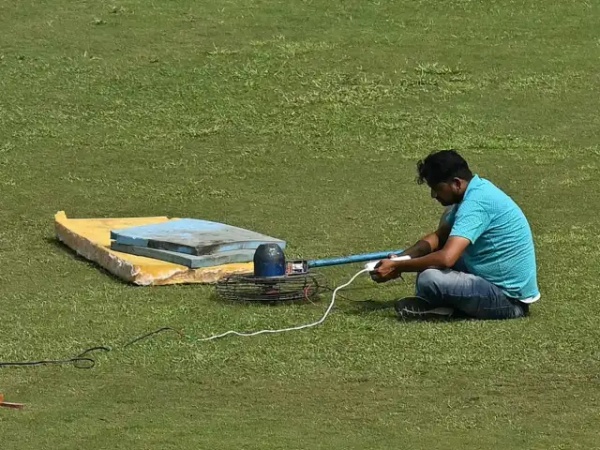Afghanistan vs New Zealand: Rewind to the historic two-innings Test match
The sole Test match between New Zealand and Afghanistan at the Greater Noida Sports Complex Ground has been plagued by weather issues, overshadowing its significance. The first two days of the game were completely lost to play due to a persistently wet outfield, rendering the pitch unplayable. As if this wasn’t enough, on Day 3 and Day 4, incessant rain continued to disrupt the proceedings, leading the officials to call off play even before the scheduled start. This pattern of bad weather has not only affected the flow of the match but also the prospects of a result. With no play possible on as many as four days, the match is inevitably drifting toward a disappointing draw. This outcome would be a letdown for both teams, given the historic nature of this Test, marking the first-ever encounter between New Zealand and Afghanistan in this format.
Afghanistan vs New Zealand: Recalling the famous two-innings Test match
However, there remains a slim chance of salvaging a result from the match. To potentially break the deadlock and avoid a complete washout, the captains of both teams could agree to a novel solution. They could decide to forfeit one innings each, thus reducing the Test to a two-innings affair. This compromise could pave the way for a more decisive conclusion, allowing both teams to showcase their skills and possibly edge towards a result despite the challenging weather conditions.
A noteworthy instance of weather disrupting a Test match occurred in January 2000 during the fifth Test between England and South Africa. South Africa, batting first, had reached 155/6 at the end of Day 1 with Lance Klusener (22*) and Shaun Pollock (9*) at the crease. Unfortunately, continuous rainfall over the next three days prevented any further play, pushing the match towards an inevitable draw.
Determined to avoid a completely inconclusive outcome, South African captain Hansie Cronje sought to find a solution. At the end of Day 4, he approached England captain Nasser Hussain to propose a plan to salvage a result from the rain-affected game. Cronje suggested that both teams forfeit one innings each, which would then allow England a target of 270 runs to be achieved within 73 overs.
Despite the innovative proposal, Hussain was hesitant to agree to such a dramatic change. His reluctance stemmed from concerns about the unpredictable behavior of the pitch, which had already shown signs of instability on the first day. Given the conditions and the pitch’s questionable state, Hussain was cautious about committing to a target and adjusting the game’s structure without further evidence of how the pitch would behave.
When play finally resumed on Day 5 at Centurion, England witnessed Lance Klusener and Shaun Pollock adding vital runs for South Africa. Observing this, England captain Nasser Hussain decided to reassess the situation. He communicated to South African captain Hansie Cronje that he would be willing to chase a target of 250 runs from 73 overs. To Hussain’s surprise, Cronje was flexible and agreed to adjust the target. He proposed extending the target to 245 runs but with 76 overs to play. This revised target seemed acceptable to both captains. However, when Paul Adams hit a boundary, the target was updated to 249 runs. England accepted this new target, demonstrating a willingness to pursue a result despite the challenging conditions and the unpredictable pitch.
Following their innings, South Africa declared at 248/8, and England’s captain Nasser Hussain, adhering to the then-current laws, declared England’s first innings without any play occurring. At that time, the regulations only permitted the forfeiture of the second innings, not the first. In a strategic move to ensure a result, South African captain Hansie Cronje decided to forfeit their second innings as well. According to Law 15.2 of the MCC’s law book, “A captain may forfeit either of his/her side’s innings at any time before the commencement of that innings. A forfeited innings shall be considered to be a completed innings.” This rule allowed Cronje to forfeit South Africa’s second innings, setting up a chase for England.
With this arrangement, England was given a target of 249 runs to win in the fourth innings. The final day of the match turned into a dramatic contest. England achieved the target in a nail-biting finish, reaching 249 runs with just two wickets to spare in 75.1 overs. Key contributions came from Michael Vaughan, who scored 69 runs, and Alec Stewart, who added 73 runs. This thrilling victory allowed England to secure the win, but ultimately, South Africa emerged as the series winners with a 2-1 series victory.
